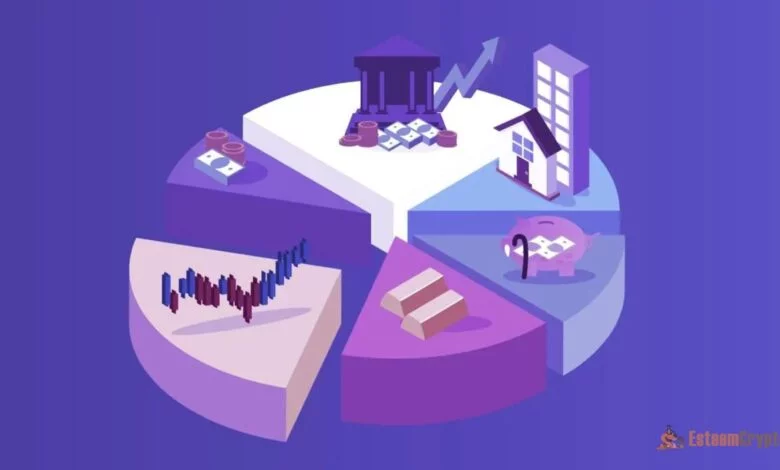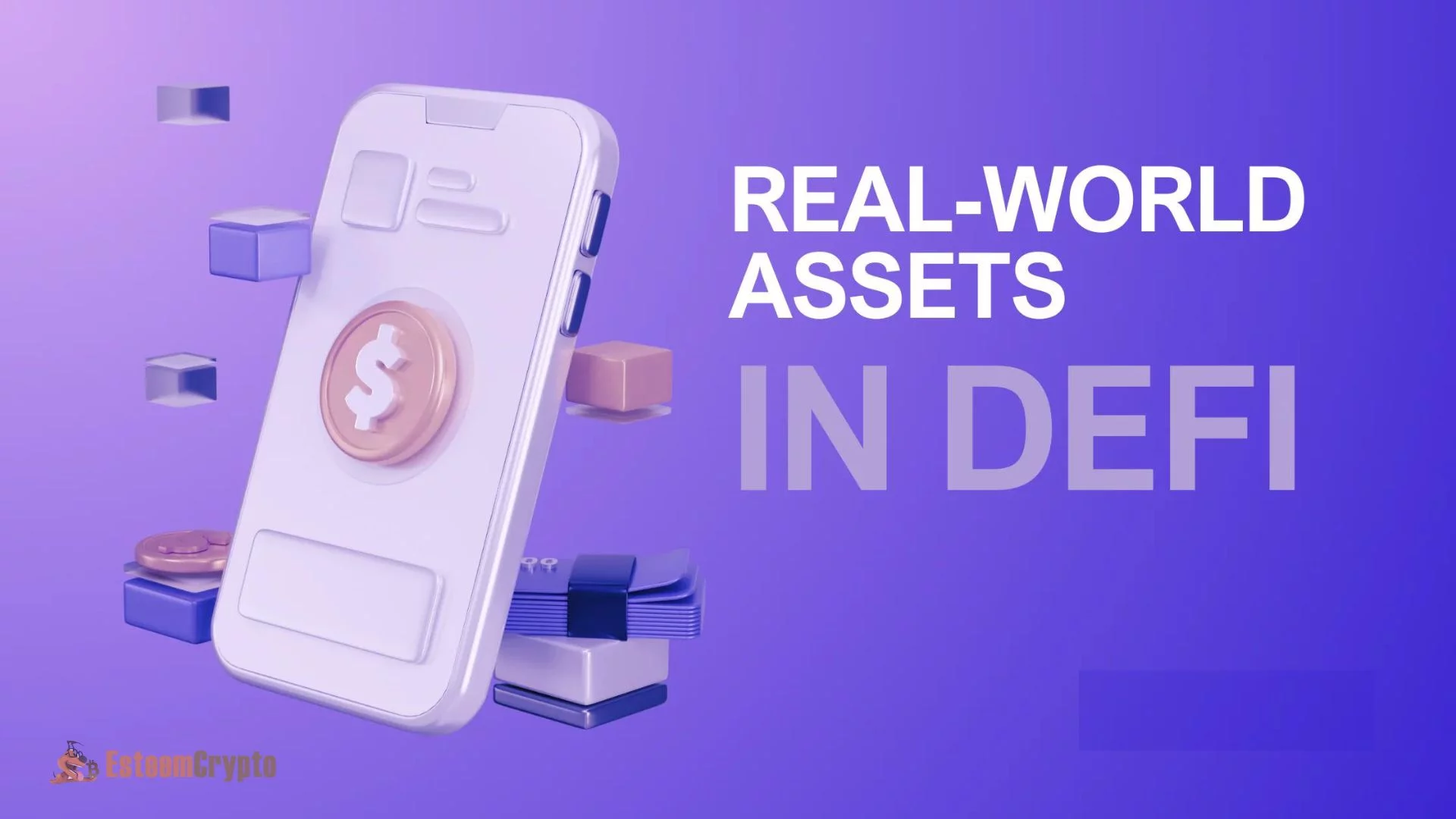Centrifuge Crypto: Unlocking DeFi for Real-World Asset

Centrifuge Crypto: A pioneer in decentralized finance (DeFi), Centrifuge aspires to unite traditional banking with blockchain technology. Centrifuge aims to tokenize real-world assets (RWAs) and transfer them to the blockchain, opening up new possibilities for financial market efficiency, transparency, and liquidity—in contrast to many DeFi protocols concentrating on digital assets like securities and tokens.
By 2024, Centrifuge has established itself as a frontrunner in the growing market for tokenized real-world assets, likely to revolutionize our understanding of finance. Centrifuge is a prominent participant in the DeFi ecosystem, and this essay will examine its salient features, novel approach to RWAs, and general significance.
The Problem Centrifuge Aims to Solve
Traditional finance operates in silos, with cumbersome processes for managing and exchanging assets. While the digital finance landscape has seen significant growth through the rise of cryptocurrencies, a massive part of the economy is still largely inaccessible to the world of DeFi: real-world assets like invoices, real estate, commodities, and other forms of tangible property. These assets are often locked within centralized institutions, subject to slow bureaucratic procedures, intermediaries fees, and a lack of liquidity.
Centrifuge aims to solve this by enabling tokenizing these real-world assets and integrating them into decentralized platforms. By bringing RWAs onto the blockchain, Centrifuge opens new pathways for businesses to access liquidity without relying on traditional banking systems or other intermediaries.
This approach unlocks new capital for asset owners and democratizes access to real-world investment opportunities for a broader range of participants, including retail investors, who were previously excluded from these markets due to high entry barriers.
How Centrifuge Works
Centrifuge is built on a decentralized platform that enables the creation, trading, and financing of RWAs in a trustless environment. The platform comprises several key components, including the Centrifuge Chain, Tinlake, and the Centrifuge token (CFG). These elements provide a seamless framework for bringing RWAs onto the blockchain and enabling DeFi interactions.
Centrifuge Chain
Centrifuge Chain is a permissionless blockchain built on Substrate, the same framework that powers the Polkadot and Kusama networks. By leveraging Substrate, Centrifuge benefits from interoperability with other blockchains, making it easier for RWAs to interact with a wide range of DeFi protocols across multiple networks. The Centrifuge Chain is specifically designed to tokenize real-world assets. Asset originators can use the platform to mint non-fungible tokens (NFTs) representing real-world assets. These NFTs are then used as collateral in DeFi protocols, allowing asset owners to borrow against or trade them on decentralized markets.
Tinlake
Tinlake is Centrifuge’s decentralized asset financing protocol. It allows businesses to finance RWAs by tokenizing and selling them to investors. Tinlake pools allow investors to invest in tokenized real-world assets, providing liquidity to asset owners while earning returns. Tinlake is unique because it uses two types of tokens to represent the assets in a pool: DROP tokens and TIN tokens. DROP tokens are senior tokens offering more security and lower risk, while TIN tokens are junior tokens offering higher potential returns but with higher risk. This structure allows investors to choose the level of risk they are comfortable with while still participating in the pool.
By integrating with DeFi protocols like MakerDAO, Aave, and others, Tinlake bridges real-world assets and decentralized finance, enabling businesses to access financing from a global pool of investors rather than being limited to traditional financing options.
Centrifuge Token (CFG)
The Centrifuge token (CFG) is the native token of the Centrifuge Chain. It is used for governance, staking, and securing the network. Holders of CFG can participate in the governance of the Centrifuge protocol, voting on proposals that affect the direction of the platform. However, This decentralized governance model ensures that the platform remains community-driven and evolves according to the needs of its users. In addition to governance, CFG is also used to incentivize liquidity providers and other participants in the Centrifuge ecosystem. By rewarding users who provide liquidity or stake their tokens, Centrifuge ensures that the network remains secure and functional.
The Importance of Real-World Assets in DeFi
One of the most compelling aspects of Centrifuge is its focus on real-world assets. While many DeFi protocols focus purely on digital assets like cryptocurrencies, Centrifuge recognizes the enormous potential of tokenizing real-world assets.
By bringing RWAs onto the blockchain, Centrifuge opens up new possibilities for liquidity, transparency, and efficiency. For example, businesses can use Centrifuge to tokenize invoices, allowing them to access liquidity faster than traditional invoice financing methods. Similarly, real estate assets can be tokenized and used as collateral in DeFi protocols, allowing for more efficient financing and investment opportunities.
Tokenization also enables fractional ownership of assets, making it easier for smaller investors to participate in previously inaccessible markets. This democratization of finance is one of the key goals of the DeFi movement, and Centrifuge is playing a leading role in making it a reality for real-world assets.
Centrifuge’s Role in the Polkadot Ecosystem
Centrifuge’s decision to build on Substrate and integrate with the Polkadot ecosystem is strategic. Polkadot’s interoperable architecture allows Centrifuge to connect with a wide range of other blockchains, enhancing the utility and reach of its platform. This interoperability is crucial for Centrifuge, allowing real-world assets to interact with a broader array of DeFi protocols.
Centrifuge has also secured a parachain slot on Polkadot, ensuring it has dedicated network space to process transactions and execute smart contracts. This para-chain integration further solidifies Centrifuge’s role as a key player in the Polkadot ecosystem and the broader DeFi space.
Partnerships and Collaborations
Centrifuge has formed strategic partnerships with several high-profile DeFi protocols and projects, including MakerDAO, Aave, and Curve. These collaborations enable Centrifuge to bring real-world assets into existing DeFi ecosystems, creating new opportunities for asset owners and investors.
For example, Centrifuge has integrated with MakerDAO, allowing RWAs to be used as collateral in the Maker Protocol. This integration enables businesses to access liquidity through the Dai stablecoin, providing a decentralized alternative to traditional financing methods. Similarly, Centrifuge’s collaboration with Aave allows tokenized RWAs to be used in Aave’s lending and borrowing markets, further expanding the utility of RWAs in the DeFi space.
The Road Ahead for Centrifuge
As Centrifuge continues to grow, its focus remains on expanding the adoption of real-world assets in decentralized finance. The tokenization of RWAs has the potential to unlock trillions of dollars worth of assets that are currently illiquid and trapped in traditional financial systems.
Centrifuge is likely to play an increasingly important role in the DeFi ecosystem, particularly as more businesses and investors recognize the value of tokenizing real-world assets. With its strong focus on interoperability, governance, and partnerships, Centrifuge is well-positioned to bring world assets to the blockchain.
In a world where DeFi and traditional finance are becoming more interconnected, Centrifuge’s unique approach to RWAs sets it apart as a project with significant long-term potential. As the DeFi ecosystem continues to mature, Centrifuge will remain a key player in unlocking the value of real-world assets for a global, decentralized audience.





